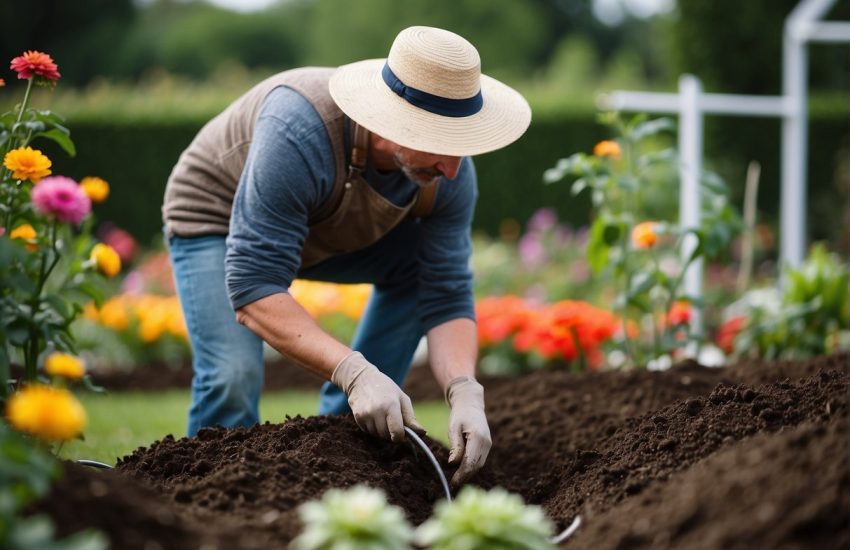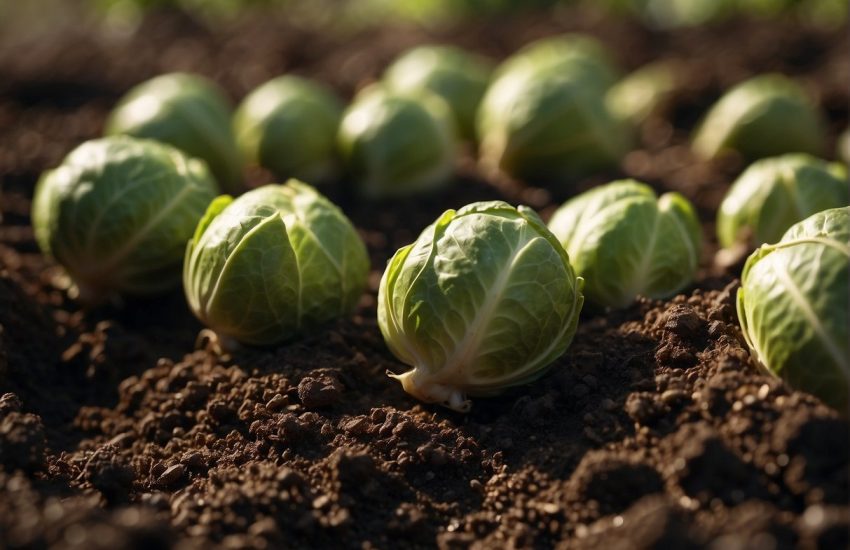Best Ground Cover Plants for Nebraska: Durable Choices for Year-Round Growth
Gardeners in Nebraska looking for ground cover have a bunch of solid options that actually work with the state’s unpredictable climate. The best ground cover plants for Nebraska are the ones that can handle the Midwest’s wild weather, need little fuss, and help protect the soil.
Creeping thyme, sedum, and ajuga really shine here—they’re tough and look good in the landscape.
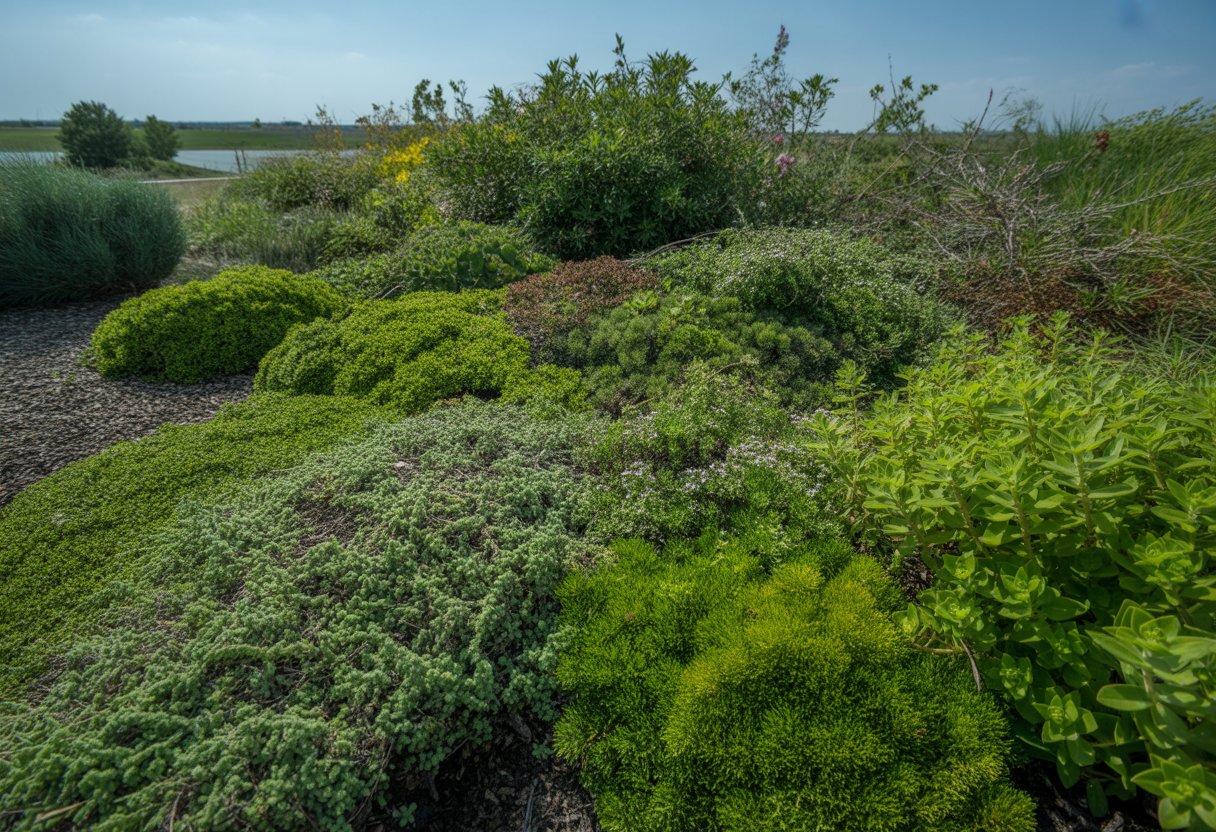
The right ground cover does more than just fill space; it helps keep weeds down and stops erosion. These plants seem to roll with Nebraska’s wild swings in temperature and soil, so they’re practical for anyone who wants a good-looking, low-hassle yard.
Knowing which plants actually work makes it a lot easier to build a garden that lasts and looks great.
Top Ground Cover Plants for Nebraska
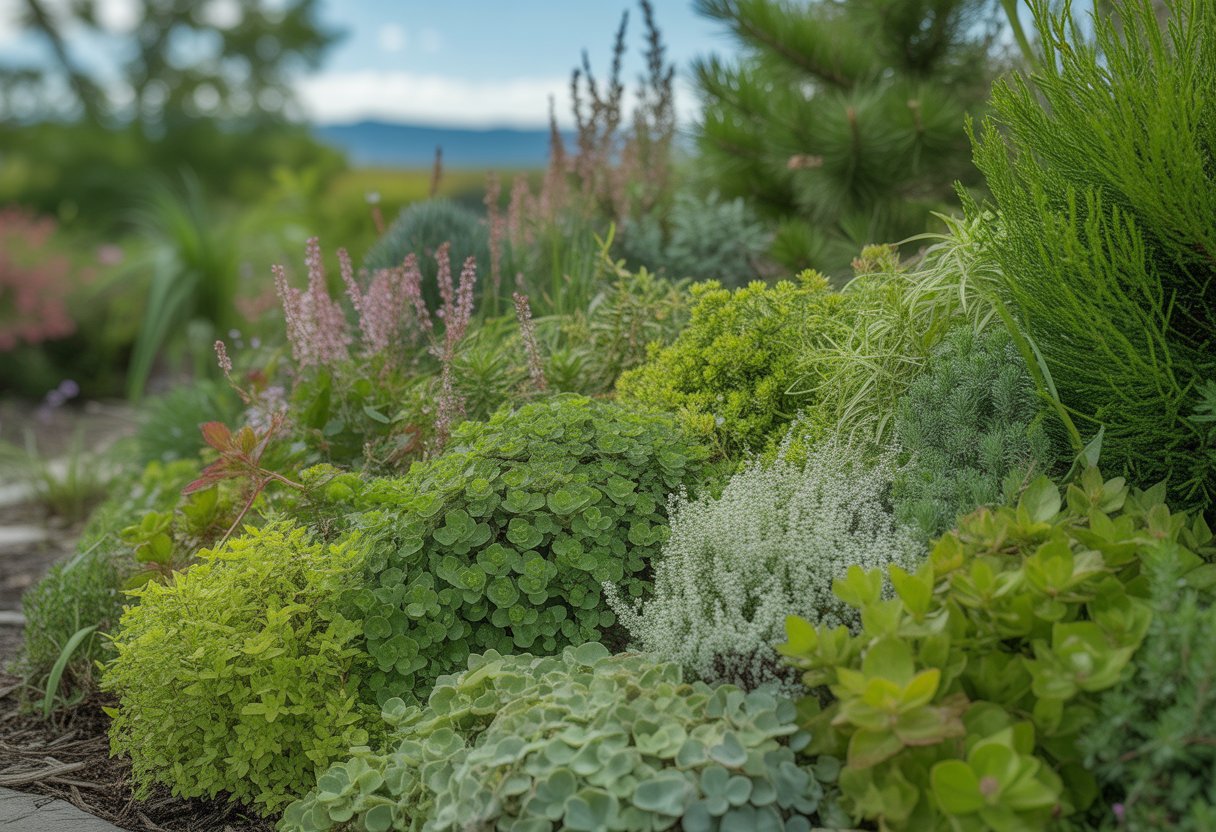
Good ground cover in Nebraska means you need plants that can take a beating and still look decent. They’ve got to handle everything from dry, sunny slopes to shady, damp corners and everything in between.
Choosing the right ones keeps your soil in place and your garden looking healthy for the long haul.
Native Grasses for Erosion Control
Little Bluestem (Schizachyrium scoparium) and Prairie Dropseed (Sporobolus heterolepis) do a great job stabilizing hillsides. Their deep roots grab onto Nebraska’s slopes and help keep the soil from washing away.
These grasses shrug off cold winters and blazing summers. Once they’re in, they barely need any attention and even give local wildlife a boost.
Planting native grasses cuts down on the need for watering and fertilizer, which makes life easier for everyone.
Shade-Loving Ground Cover Options
In shady spots, Wild Ginger (Asarum canadense) and Pennsylvania Sedge (Carex pensylvanica) are your friends. They spread out and block weeds, even where the sun barely peeks through.
Wild Ginger’s big leaves make a thick, green mat. Pennsylvania Sedge forms soft, fine-textured patches that work well in partial shade.
Neither needs much water, and deer tend to leave them alone, so you don’t have to worry about them getting munched.
Drought Tolerant Species
If your garden’s on the dry side, you can’t go wrong with Sedum (Stonecrop) or Creeping Juniper (Juniperus horizontalis). Both handle sandy or well-drained soils without fuss.
Sedum shrugs off heat and poor soil, plus it throws out little flowers that pollinators love. Creeping Juniper slides right over slopes, locking down the soil and handling dry Nebraska summers without breaking a sweat.
They barely need watering, which is a relief when rain gets scarce.
Low-Growing Flowering Plants
If you want some color, Creeping Phlox (Phlox subulata) and Wild Strawberry (Fragaria virginiana) work wonders. They like sun or partial shade and bring in pollinators with their blooms.
Creeping Phlox bursts out in bright flowers every spring. Wild Strawberry spreads quickly and even gives you a few berries if you’re lucky.
They’re great along borders or walkways, adding both coverage and a splash of interest.
Choosing the Right Ground Cover for Your Landscape
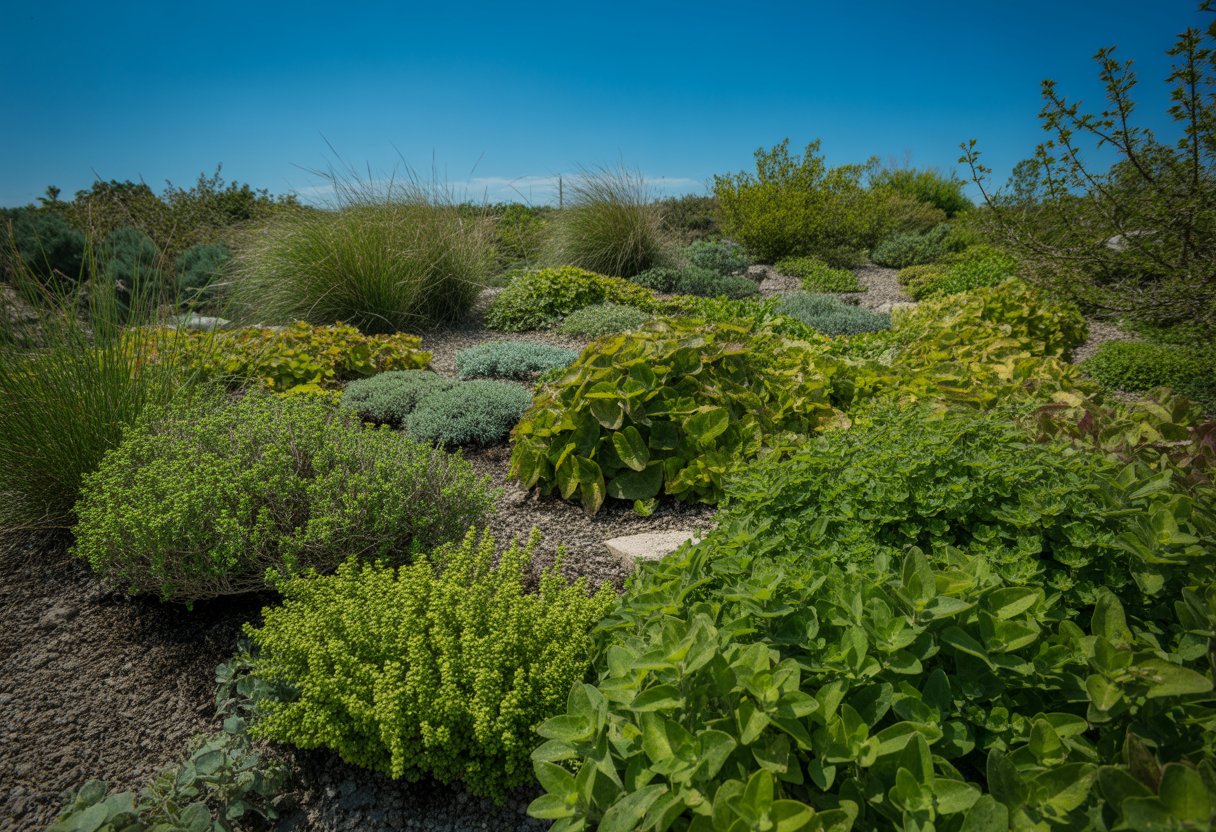
Picking the best ground cover comes down to knowing your garden’s light, soil, and slope. If you match the plant to the spot, you’ll get better growth and fewer headaches.
Sun and Shade Requirements
Some ground covers love the sun, while others just can’t handle it. Nebraska’s full-sun spots call for drought-tolerant and heat-resistant types like Sedum or Creeping Thyme.
They don’t mind baking in direct sunlight and don’t need much water.
If you’ve got shade, Pachysandra or Sweet Woodruff are a safer bet. They prefer things cool and a bit damp, and they won’t scorch like sun-lovers do.
Getting the light right keeps your ground cover from looking patchy or stressed.
Soil Type and Soil Moisture Needs
Soil makes a big difference. Sandy or loamy soils suit most drought-tolerant plants, while heavy clay needs ground covers that can handle a little extra moisture—think Ajuga or Vinca minor.
Try to match the plant to what your soil’s actually like. Nebraska’s weather can swing from dry to soggy, so flexibility helps.
Keeping soil moisture consistent—without flooding or drying out—goes a long way toward avoiding problems like root rot.
Best Ground Cover for Slopes and Hillsides
Hillsides need something tough and fast-spreading. Creeping Juniper and Pachysandra have deep roots that grip the soil and keep erosion at bay.
Plants on slopes have to put up with water running off and less moisture sticking around. Their roots hold the ground together and make the whole area look more pulled-together.
Pick wisely, and you’ll spend less time fixing erosion and more time enjoying your garden.
Planting, Propagation, and Maintenance Tips
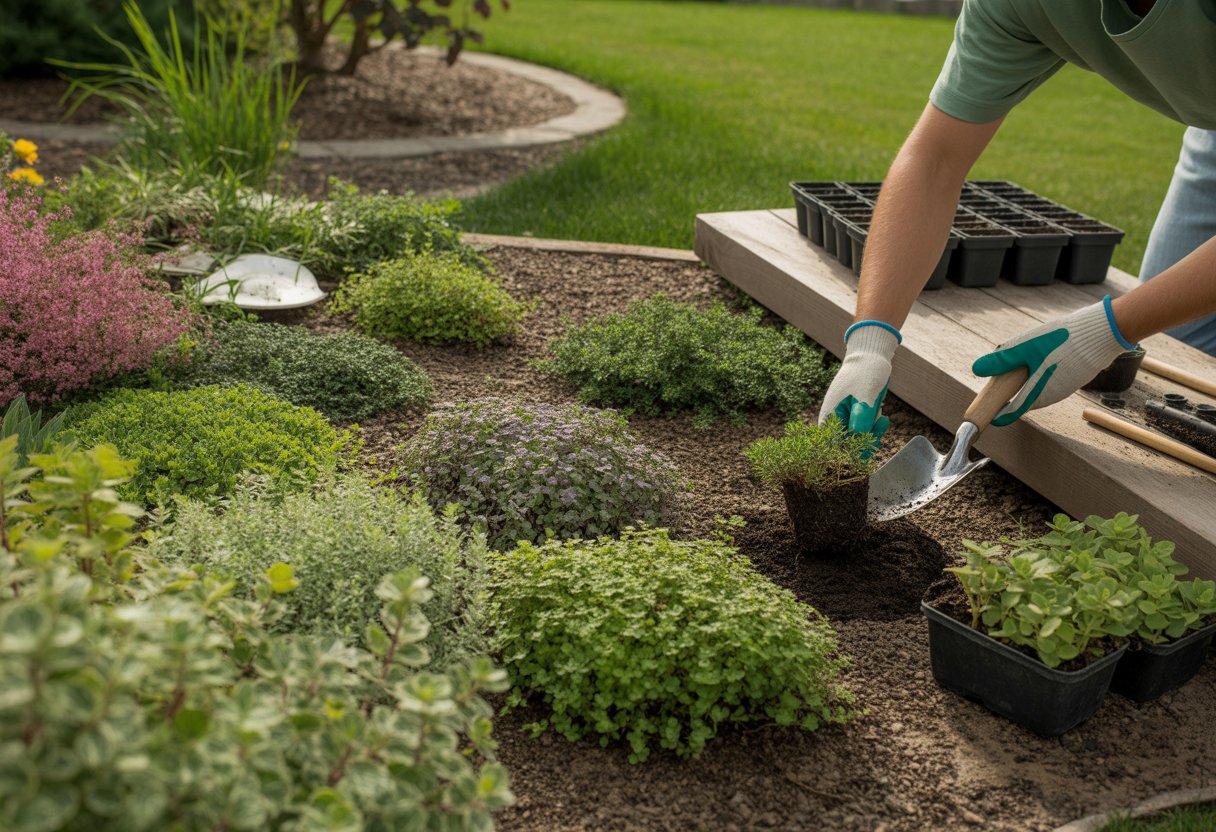
Getting ground cover started in Nebraska isn’t rocket science, but timing, prep, and a little care make a big difference. Paying attention to the weather, the seeds, and the soil keeps things on track.
When to Plant Ground Cover in Nebraska
Early spring or early fall works best for planting ground cover in Nebraska. Spring gives plants a chance to settle in before summer, while fall lets them root before winter hits.
Wait until the soil warms up above 50°F for good germination and root growth. Planting in the middle of a blazing summer? That’s just asking for trouble.
Clear out weeds and loosen the top few inches of soil so roots can spread and water gets in. Mulch helps keep things moist and steady after planting.
Propagating by Seed and Seedlings
You can start ground covers from seeds or seedlings, depending on what you’re planting. Some seeds need to be fresh and might need a cold spell before they’ll sprout—especially with native types.
If you’re using seedlings, pick healthy ones from a good nursery. Handle them gently and water right after planting so they get off to a solid start.
For seeds, sow them evenly and just barely cover with soil. Keep things damp but not soggy until they come up.
Give seedlings enough space for air to move—crowding just invites disease, and that’s no fun for anyone.
Avoiding Root Rot and Common Problems
Root rot usually happens when soil drains poorly and you water too much. Make sure the planting area drains well, and don’t stick to a rigid watering schedule.
Only water when the top inch of soil feels dry. If you add organic matter, the soil gets better structure and drains more easily.
Check your plants now and then for yellow leaves or wilting. These can sometimes mean the roots aren’t happy.
Weeds and pests are another headache. Mulch helps a lot, and hand weeding is effective, if a bit tedious.
If pests show up, deal with them quickly using the right method for whatever’s bugging your plants.

